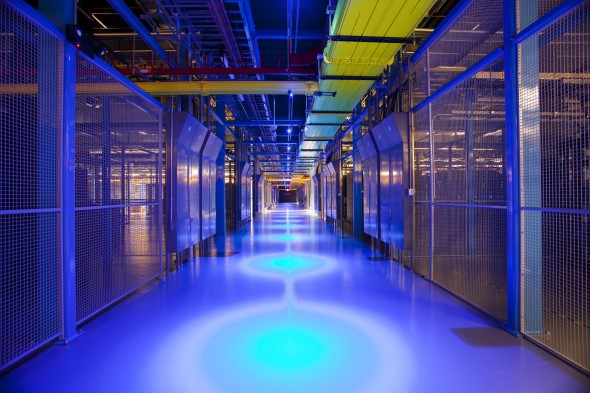
Moore’s Law, termed by Intel co-founder Gordon Moore a little over 50 years ago, stated technology would rise exponentially, with transistors doubling in quantity every two years. Here, Steve Kyprianou, managing director for TSI, examines this progress and looks at the data centre of tomorrow and what it could look like.
Today, there is more processing power in a single handheld device than that which NASA had at its disposal during the moon landings. So, as this increase continues, where does that leave our data centres in the future?
We will need to consider flexibility, cost, speed – and coping with it. Then there are the regulations around energy and cross-nation applications and, of course, the technology itself and disaster recovery.
One fear is that processing power will outstrip the capabilities of the human brain – but I’m happy to leave that notion to Hollywood for the time being and just examine how the future will look and how it may impact us.
What’s next?
The days of being tied to a single networking vendor or technology are on the demise as we see Open Standards allowing separation of the network hardware and software – which allows for the development of products that are optimised for data centres.
For example, they allow for greater airflow through server components, which enables them to be kept cooler. This will be a huge boon going forward as we look to go totally green, as energy consumption will be vastly reduced.
The Open Compute Project is already championing the cause of making hardware more efficient, flexible and scalable. Facebook recognised this, and the need to rethink its infrastructure to cope with the unprecedented, huge demands of users. We should all follow suit.
Speed will be another key driver. We are witnessing interconnection between systems increasingly dependent upon fibre rather than copper cabling – this is also true for our core telecoms business. Even 40G and 100G links over multiple multimode fibre channels will give way to individual singlemode fibre channels as the cost of transceivers continue to reduce.
What’s driving change?
It may be people and demand that’s driving change – but I believe it’s the technology itself that’s creating the demand – like the Internet of Things.
The growth of the amount of devices that can be controlled, from our cars to our home energy, has increased slowly over the past 10 years but will rise considerably over the next 10.
We no longer just see one device per household or employee. And, as readily available devices designed to connect to the internet continue to emerge, this too will impact upon data centres of the future and the need to meet more complex demands.
What’s different?
Cloud and hybrid solutions will remain integral to managing our data but I see SaaS apps in the cloud in the future, along with virtual desktop infrastructures (VDI) as companies strive to achieve reliable networking anywhere and everywhere.
Cloud PBX is also set to revolutionise how we communicate anywhere and at anytime and will change the face of voice and data infrastructure. This is now a multifaceted business and two-way communication in a business environment is being replaced by multi-sited conferencing.
What’s green?
Great strides have been made to ensure new data centres are green, nowadays. And as we move forward, this needs to be integral without compromising speed, cost and efficiency. We could see cyber attacks on grid and telecoms networks that could also impact data centres.
Again, a key feature of the Open Compute Project is to minimise the environmental impact of datacentre infrastructure.
The initial design stage does away with unnecessary features and components that would waste manufacturing resources and operating energy, even including reduced transportation energy use due to reduced weight.
Datacentres using these design principles can claim extremely low Power Usage Effectiveness (PUE), which is a measure of the data centre’s wastefulness or efficiency.
What’s the end game?
Within a human occupied building environment, copper structured cabling will play an on-going important role – providing connectivity for the increasing number of networked building control systems such as access control systems,
digital CCTV cameras, building management systems and modern LED lighting panels.
Even wireless devices need wired access points to work – and these are connected to the network and a power source by the humble RJ45 plug and a length of Cat6 or Cat6a cable.
Within data centres, connectivity will become almost exclusively via fibre as speeds increase and
costs reduce.
Finally, and I know I said I’d leave it to Hollywood, but this all assumes a human occupied building. My fear is that, in direct opposition to Moore’s Law that predicts the exponential rise of transistors, we’ll see very few humans in such environments.

